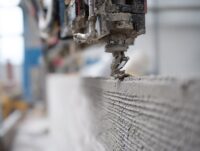- Home
- Articles
- Architectural Portfolio
- Architectral Presentation
- Inspirational Stories
- Architecture News
- Visualization
- BIM Industry
- Facade Design
- Parametric Design
- Career
- Landscape Architecture
- Construction
- Artificial Intelligence
- Sketching
- Design Softwares
- Diagrams
- Writing
- Architectural Tips
- Sustainability
- Courses
- Concept
- Technology
- History & Heritage
- Future of Architecture
- Guides & How-To
- Art & Culture
- Projects
- Interior Design
- Competitions
- Jobs
- Store
- Tools
- More
- Home
- Articles
- Architectural Portfolio
- Architectral Presentation
- Inspirational Stories
- Architecture News
- Visualization
- BIM Industry
- Facade Design
- Parametric Design
- Career
- Landscape Architecture
- Construction
- Artificial Intelligence
- Sketching
- Design Softwares
- Diagrams
- Writing
- Architectural Tips
- Sustainability
- Courses
- Concept
- Technology
- History & Heritage
- Future of Architecture
- Guides & How-To
- Art & Culture
- Projects
- Interior Design
- Competitions
- Jobs
- Store
- Tools
- More
Weather-Proofing in Design: Ensuring Every Layer Holds Up

Weather is one of the most persistent forces that tests the durability of our built environment. From intense summer heat to freezing winters, from rainstorms to high winds, every structure faces challenges that require thoughtful planning and strong design choices. Weather-proofing is not just about keeping water out or heat in. It’s about creating a layered system where every material, joint, and finish plays a role in long-term resilience.
When design accounts for the unpredictability of weather, it prevents premature wear, reduces costly repairs, and extends the lifespan of structures. In many ways, weather-proofing is both science and strategy, blending engineering principles with practical foresight.
Table of Contents
ToggleWhy Weather-Proofing Matters
Weather-proofing protects more than the structure itself. It safeguards the comfort of those who live or work inside, ensures energy efficiency, and maintains overall property value. When ignored, small vulnerabilities—like cracks, poor insulation, or aging seals—can expand into major problems. Moisture infiltration may weaken foundations, while heat loss can inflate energy bills.
Proper weather-proofing also addresses climate-specific risks. A home in a coastal region must withstand salt-laden winds, while one in a northern climate must resist freeze-thaw cycles. Recognizing these unique pressures and designing accordingly is what separates structures that last from those that quickly fail.
The Layered Approach to Weather-Proofing
Successful weather-proofing is never the result of a single barrier. Instead, it involves layers working together to shield against external forces. Each layer has its own role:
- Outer layer: Deflects direct exposure to rain, snow, wind, and UV rays.
- Intermediate layer: Manages water runoff and allows trapped moisture to escape.
- Insulation layer: Controls heat flow and prevents condensation.
- Interior layer: Provides the final defense while maintaining comfort and aesthetics.
By layering protection, even if one system fails, the others continue to provide support. This redundancy ensures that a building maintains its integrity under pressure.
Garage Doors in Harsh Conditions
One of the most overlooked parts of a home in terms of weather-proofing is the garage door. Because of its large surface area and moving parts, it’s more exposed to wear than a standard entry door. Temperature fluctuations, humidity, and heavy winds can all affect its function.
Upgrades and timely repairs make a huge difference. For instance, homeowners who invest in new garage door openers and torsion spring replacement in Bridgeport, PA often find that improved mechanics not only enhance daily convenience but also strengthen resilience against weather extremes. A properly balanced and sealed garage door reduces drafts, prevents water intrusion, and supports overall energy efficiency in the connected spaces of a home.

Materials That Make a Difference
Not all materials respond to weather the same way. Designers and builders need to select options that balance strength, cost, and environmental impact.
- Roofing: Metal, clay, and composite shingles all have distinct advantages in resisting moisture and UV degradation.
- Siding: Fiber cement, brick, and treated wood offer varying degrees of protection against wind-driven rain.
- Sealants: High-quality caulks and flashing prevent water from entering small gaps.
- Windows and doors: Double- or triple-glazed glass with insulated frames reduces heat transfer.
The right combination depends on the climate, but the principle is universal: quality materials mean fewer vulnerabilities.
Windows, Doors, and Entry Points
Openings in a building are often the most vulnerable spots for weather damage. They require special attention because they disrupt the continuity of walls and roofs. A poorly sealed window frame can let in drafts, while a weak door threshold may allow water to seep in.
Designers often reinforce these points with flashing, specialized seals, and insulating materials. Even more, regular inspection is critical because small gaps develop over time as buildings settle. A door or window may look sturdy, but without maintenance, it can quickly become a weak link in the system.
The Role of Ventilation
Weather-proofing is not only about keeping outside elements from entering—it’s also about managing what happens inside. Ventilation plays a key role in ensuring moisture does not build up. Without it, condensation can form on surfaces, leading to mold growth, wood rot, and compromised insulation.
Attics, basements, and crawl spaces particularly benefit from balanced ventilation systems. These spaces often go unnoticed, yet their condition greatly influences the performance of the entire structure. A good design integrates airflow channels that let moisture escape while still keeping the weather at bay.

Maintenance as Part of Design
Even the strongest weather-proofing measures need consistent upkeep. Regular inspections catch small issues before they become major failures. Checking seals, clearing gutters, repairing minor cracks, and reapplying protective coatings are simple tasks that extend the life of a structure.
Maintenance should be considered an extension of the design itself. A building is not complete on the day it’s constructed—it continues to live and breathe with its environment. Owners who understand this mindset avoid unexpected surprises and large repair bills later.
Innovations in Weather-Proofing
Modern technologies are pushing weather-proofing forward. Smart materials, like self-healing concrete and hydrophobic coatings, are being used to fight against long-term degradation. Thermal imaging tools help identify leaks that the naked eye cannot see.
Builders are also incorporating sustainability into weather-proofing. For example, green roofs not only resist weather but also provide insulation and reduce stormwater runoff. These innovations show that weather-proofing is no longer just about defense—it’s about smarter, more efficient living.
Conclusion
Weather-proofing is both practical and proactive. It ensures that every structure—whether a family home, office, or industrial building—can withstand the constant tests of nature. By layering protection, selecting durable materials, and maintaining critical points, designs achieve both durability and efficiency.
Every decision, from the choice of roofing to the reinforcement of openings, contributes to a structure that doesn’t just stand tall but holds up against years of changing weather. When each layer works as part of a whole, the result is not only strength but also peace of mind.
illustrarch is your daily dose of architecture. Leading community designed for all lovers of illustration and #drawing.
Submit your architectural projects
Follow these steps for submission your project. Submission FormLatest Posts
6 Ways Technology Is Transforming Animal Control Practices Today
Animal control is changing fast. New tools help teams prevent conflicts, protect...
Why Timely Intervention Is Critical In Controlling Household Pest Problems
Pests move fast, so your response has to move faster. The sooner...
Evaluating Safety and Care Needs for Aging Parents
Caring for a parent involves balancing respect for independence with real-world safety....
Solutions to Keep Every Room Organized
Clutter sneaks in fast, but a calm home is built one small...












Leave a comment